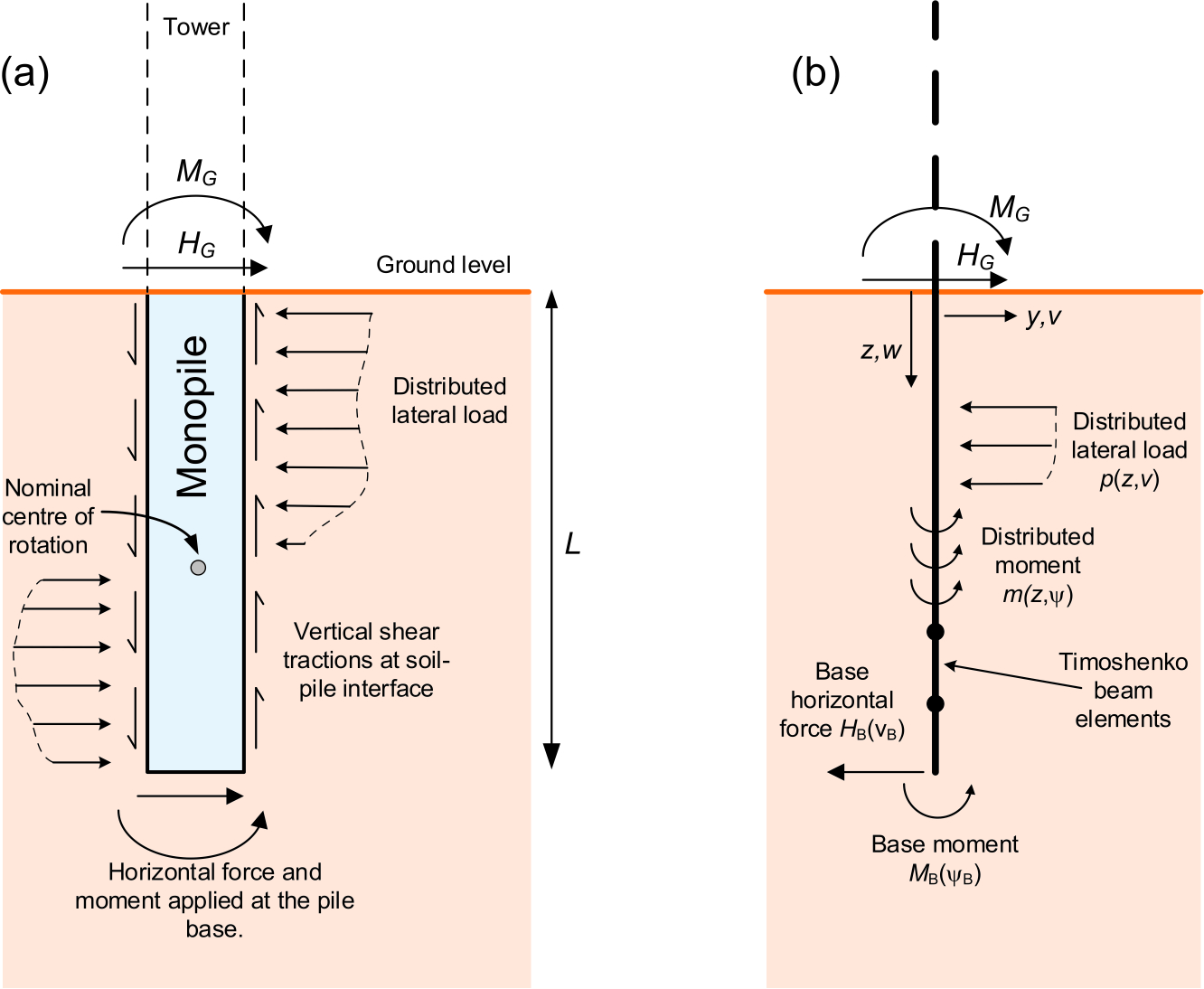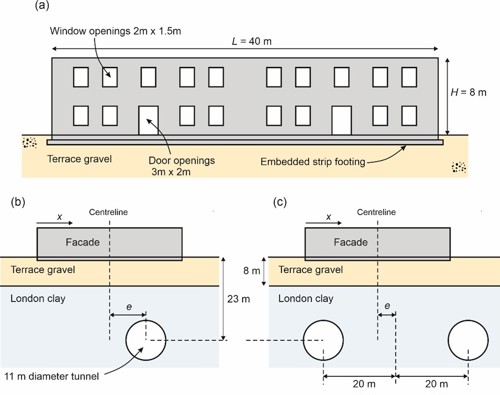Biography
Professor Harvey Burd read Engineering Science at Hertford College, Oxford University, graduating in 1980. After a spell working as a structural engineer with Ove Arup and Partners, he returned to Oxford to undertake post-graduate research in soil mechanics.
He was awarded a D.Phil. in 1986, and in 1987 he was appointed to a University Lecturership at Oxford University. He served as Chairman of the Faculty of Engineering Science from 2008 to 2009. More recently, he served a 3-year spell as Associate Head of Department (Infrastructure) in the Engineering Science Department. He is a Tutorial Fellow of Brasenose College where, in the past, he has held the offices of Dean and Senior Tutor.
Harvey is a Chartered Engineer and a Fellow of the Institution of Civil Engineers. His research and teaching interests are principally in the areas of structural mechanics, soil mechanics and geotechnical engineering.
Most Recent Publications
Estimation of settlement-induced damage in masonry buildings from displacement measurements
Estimation of settlement-induced damage in masonry buildings from displacement measurements
Numerical modeling of the influence of scour and scour protection on monopile dynamic behavior
Numerical modeling of the influence of scour and scour protection on monopile dynamic behavior
Investigation of local soil resistance on suction caissons at capacity in undrained clay under combined loading
Investigation of local soil resistance on suction caissons at capacity in undrained clay under combined loading
Small-strain, non-linear elastic Winkler model for uniaxial loading of suction caisson foundations
Small-strain, non-linear elastic Winkler model for uniaxial loading of suction caisson foundations
Generation of a General Cowden Clay Model (GCCM) Using a Data-Driven Method
Generation of a General Cowden Clay Model (GCCM) Using a Data-Driven Method
Research Interests
Professor Harvey Burd has a range of research interests in geotechnical engineering and soil-structure interaction. Much of his research is concerned with the development and implementation of numerical methods to support design processes or to assess the condition and vulnerability of existing structures and assets. He also works on the biomechanics of the human eye.
Offshore Monopile Foundations
The development of new procedures to support the design of monopile foundations for offshore wind turbines is a particular current focus. Harvey was a member of the recent PISA project academic team; the PISA project comprised field testing, 3D finite element analysis and the development of new, simplified, monopile design procedures. His main role was to support the development of a new one-dimensional finite element approach, referred to as the ‘PISA design model’ and illustrated in Fig. 1. The PISA design model was originally developed for homogeneous soils, but the approach has subsequently been demonstrated for layered soil configurations. Work to generalise the modelling approach to cyclic loads is ongoing. Mr Ioannis Kamas is a current research student – enrolled in the WAMESS CDT and jointly supervised by Professor Byron Byrne – working in this area.


Figure 1: PISA design model (a) idealisation of the soil reaction components acting on the pile (b) 1D finite element implementation of the model showing the soil reactions acting on the pile (Reproduced from Fig. 2 of Burd et al. 2020)
Numerical analysis of offshore foundations and pipelines
In recent years Harvey has engaged with a variety of projects on the development of improved numerical procedures to model shallow offshore foundations and pipelines. Much of this work has been in collaboration with Dr Stephen Suryasentana (currently Chancellor's Fellow at Strathclyde University) and Professor Byron Byrne. Recent work includes the development of an automated approach to formulate failure envelopes for shallow foundations subjected to planar (V,H,M) loading, as illustrated in Fig. 2. Current research – being conducted in collaboration with Prof. Chris Martin and Mr Tianyu Li (graduate student) - is concerned with the analysis of thermal buckling processes in subsea pipelines.

Figure 2: VHM loading configuration for surface foundation and caisson (Reproduced from Fig. 1 of Suryasentana et al. 2020)
Masonry building soil-structure interaction
Harvey has long-standing interests in the development of numerical analysis procedures to assess the risk of damage to masonry buildings due to nearby underground construction. A recent numerical study, conducted in collaboration with Dr Wing Nam Yiu (former graduate student) and Prof. Chris Martin was concerned with detailed 3D finite element parametric studies of tunnel-soil-building configurations that are representative of conditions in London, Yiu et al. 2017, as illustrated in Fig 3.

Figure 3; Tunnel-soil-building scenarios that were studied in Yiu et al. 2017
Current research is being conducted in collaboration with Prof. Sinan Acikgoz. Research students Ms Derya Burcu Gulen and Mr Yiyan Liu are pursuing their doctoral work in this area.
Ophthalmic Engineering
Harvey also has research interests in Ophthalmic Engineering. Much of this research involves the application of numerical procedures, originally developed in the context of Civil Engineering, to the study of the mechanical and optical performance of the eye. He is currently working with Dr Ralph Michael, and others, at the Barraquer Institute in Barcelona on a range of projects. Current work is concerned with investigating possible causal links between internal mechanical deformations in the lens and the development of cortical cataract (Michael et al. 2021).
References
Burd, H.J., Taborda, D.M.G. Zdravković, L. Abadie, C.N., Byrne, B.W., Houlsby, G.T., Gavin, K.G., Igoe, D.J.P., Jardine, R.J., Martin, C.M., McAdam, R.A., Pedro, A.M.G. & Potts, D.M. (2020) PISA Design Model for Monopiles for Offshore Wind Turbines: Application to a Marine Sand. Geotechnique, 70(11), 1048-1066.
Michael, R., D'Antin, J.C., Pinilla Cortés, L., Burd, H.J., Sheil, B. & Barraquer, R.I. (2021) Deformations and ruptures in human lenses with cortical cataract subjected to ex vivo simulated accommodation. 62(1):12. IOVS
Suryasentana, S.K., Burd, H.J, Byrne, B.W. & Shonberg, A. (2019) A Systematic Framework for Formulating Convex Failure Envelopes in Arbitrary Loading Dimensions. Géotechnique 70(4), 343-353
Yiu, W. N., Burd, H. J., & Martin, C. M. (2017). Finite-element modelling for the assessment of tunnel-induced damage to a masonry building. Géotechnique, 67(9), 780-794.
Research Groups
Most Recent Publications
Estimation of settlement-induced damage in masonry buildings from displacement measurements
Estimation of settlement-induced damage in masonry buildings from displacement measurements
Numerical modeling of the influence of scour and scour protection on monopile dynamic behavior
Numerical modeling of the influence of scour and scour protection on monopile dynamic behavior
Investigation of local soil resistance on suction caissons at capacity in undrained clay under combined loading
Investigation of local soil resistance on suction caissons at capacity in undrained clay under combined loading
Small-strain, non-linear elastic Winkler model for uniaxial loading of suction caisson foundations
Small-strain, non-linear elastic Winkler model for uniaxial loading of suction caisson foundations
Generation of a General Cowden Clay Model (GCCM) Using a Data-Driven Method
Generation of a General Cowden Clay Model (GCCM) Using a Data-Driven Method
Publications
A list of publications is available here.
Most Recent Publications
Estimation of settlement-induced damage in masonry buildings from displacement measurements
Estimation of settlement-induced damage in masonry buildings from displacement measurements
Numerical modeling of the influence of scour and scour protection on monopile dynamic behavior
Numerical modeling of the influence of scour and scour protection on monopile dynamic behavior
Investigation of local soil resistance on suction caissons at capacity in undrained clay under combined loading
Investigation of local soil resistance on suction caissons at capacity in undrained clay under combined loading
Small-strain, non-linear elastic Winkler model for uniaxial loading of suction caisson foundations
Small-strain, non-linear elastic Winkler model for uniaxial loading of suction caisson foundations
Generation of a General Cowden Clay Model (GCCM) Using a Data-Driven Method
Generation of a General Cowden Clay Model (GCCM) Using a Data-Driven Method





